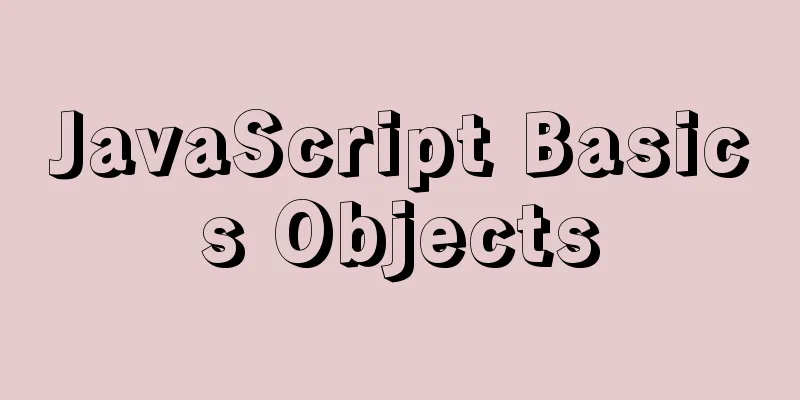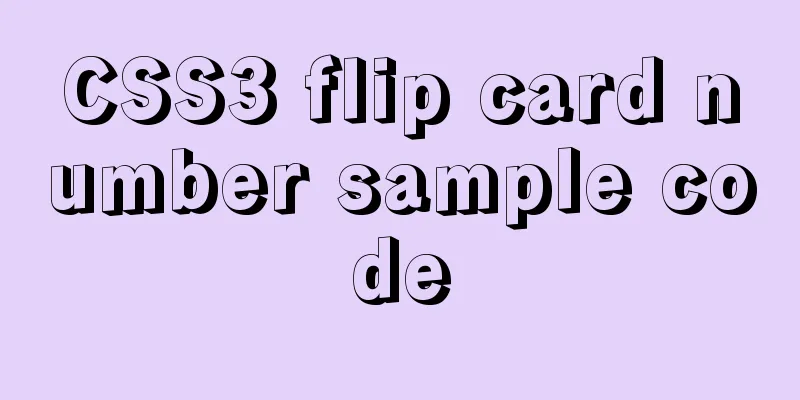JavaScript Basics Objects

1. Object1.1 What is an object?In JavaScript, an object is an unordered collection of related properties and methods. Everything is an object, such as strings, numbers, arrays, functions, etc. Objects are composed of properties and methods
1.2 Why do we need objects?To store a value, you use a variable; to store a set of values, you use an array. What if you want to save a person's complete information? For example, the way to save Zhang San's personal information in an array is: var arr = ['张三','男',123,156]; It is clearer to save Zhang San's personal information in the form of an object. 2. Three ways to create objects2.1 Creating objects using object literals {}Object literal: { } contains the properties and methods of the (object) that expresses this specific thing.
<script>
//Use object literals to create objects {}
var obj = {}; //Creates an empty object var obj = {
uname: '张三',
age: 18,
sex: 'male',
sayhi: function () {
console.log('hi');
}
};
//(1) The properties or methods inside are in the form of key-value pairs: key property name: value property value //(2) Multiple properties or methods are separated by commas //(3) The method is followed by an anonymous function //2. Using objects //(1) To call the properties of an object, we use the object.property name method console.log(obj.uname);
//(2) Call the object's attribute object name ['attribute name']
console.log(obj['age']);
//(3) Call the method of the object object name.method name obj.sayhi();
</script>2.2 Creating an object using new Object
// //Use new Object to create an object var obj = new Object(); //Create an empty object obj.uname = '张三';
obj.age = 18;
obj.sex = 'male';
obj.sayhi = function () {
console.log('hi~');
}
console.log(obj['uname']);
console.log(obj.sex);
obj.sayhi();
//(1) We use the equal sign = assignment method to add object properties and methods //(2) Use ; between each property and method to end //Case var Object = new Object();
Object.uname = 'Naruto';
Object.sex = 'male';
Object.age = 19;
Object.skill = function () {
console.log('Shadow Clone Technique');
}
console.log(Object.uname);
Object.skill();2.3 Creating objects using constructors//Why do we need to use a constructor? //Because our first two ways of creating objects can only create one object at a time. //Because we create an object at a time, many of the properties and methods in it are the same. Use functions to reuse code. This function is called a constructor. //The constructor encapsulates the object. //The constructor abstracts some of the same properties and methods in our object and encapsulates them in the function. Constructor : A special function that is mainly used to initialize objects, that is, to assign initial values to object member variables. It is always used with the new operator. We can abstract some common properties and methods in the object and encapsulate them into this function.
<script>
//Use the constructor to create an object //Constructor syntax // function constructor name() {
// this.property = value;
// this.method = function() {}
// }
// new constructor name();
function Star(uname, age, sex) {
this.name = uname;
this.age = age;
this.sex = sex;
this.sing = function (song) {
console.log(song);
}
}
var ldh = new Star('Andy Lau', 18, 'Male'); //The function call returns an object console.log(typeof ldh);
console.log(ldh.name);
console.log(ldh['sex']);
ldh.sing('Ice Rain');
var zxy = new Star('Jacky Cheung', 36, 'Male');
console.log(zxy.name);
console.log(zxy['sex']);
zxy.sing('Li Xianglan');
//1. The first letter of the constructor name should be capitalized //2. Our constructor can return results without return //3. We must use new to call the constructor
//4. We just need to call the new Srart() function to create an object //5. Our properties and methods must be preceded by this
</script>SummarizeThis article ends here. I hope it can be helpful to you. I also hope that you can pay more attention to more content on 123WORDPRESS.COM! You may also be interested in:
|
<<: Basic operations on invisible columns in MySQL 8.0
>>: The effect of CSS dynamic gradient border rotating around the content area (example code)
Recommend
In-depth explanation of Mysql deadlock viewing and deadlock removal
Preface I encountered a Mysql deadlock problem so...
A brief discussion on the differences between the three major databases: Mysql, SqlServer, and Oracle
MySQL advantage: Small size, fast speed, low tota...
How to install MySQL and enable remote connection on cloud server Ubuntu_Server_16.04.1
1. Install MySQL: Use the following three command...
Ubuntu Docker installation in vmware (container building)
1. Mind Map 2. How to build a container 2.1 Prepa...
Detailed explanation of deploying MySQL using Docker (data persistence)
This article briefly describes how to use Docker ...
How familiar are you with pure HTML tags?
The following HTML tags basically include all exis...
About the correct way to convert time in js when importing excel
Table of contents 1. Basics 2. Problem Descriptio...
This article will show you how JavaScript garbage collection works
Table of contents 1. Overview 2. Memory Managemen...
JavaScript to implement the back to top button
This article shares the specific code for JavaScr...
Let's talk about the LIMIT statement in MySQL in detail
Table of contents question Server layer and stora...
Mysql desktop tool SQLyog resources and activation methods say goodbye to the black and white command line
Without further ado, let’s get started with resou...
Window environment configuration Mysql 5.7.21 windowx64.zip free installation version tutorial detailed explanation
1. Download mysql-5.7.21-windowx64.zip from the o...
Analyzing the practical record of using docker to build microservices with SpringBoot
What is it? Spring Boot is a sub-project of the S...
Solve the problem that the CentOS7 virtual machine cannot access the Internet and set up the CentOS7 virtual machine to use a static IP to access the Internet
I was playing with CentOS in a VMware virtual mac...
Complete steps to use element in vue3.0
Preface: Use the element framework in vue3.0, bec...









